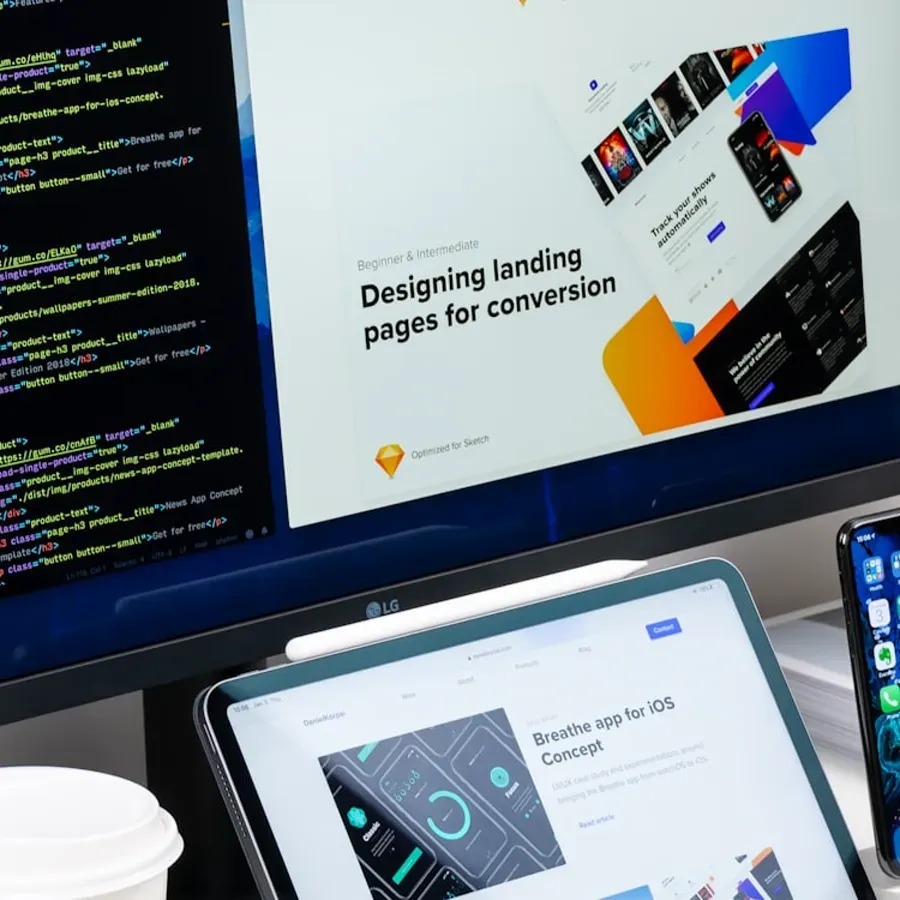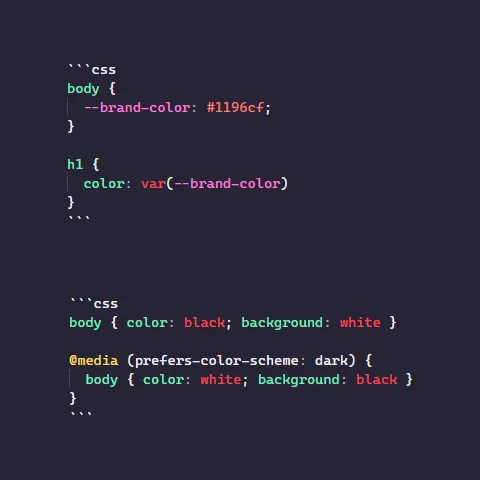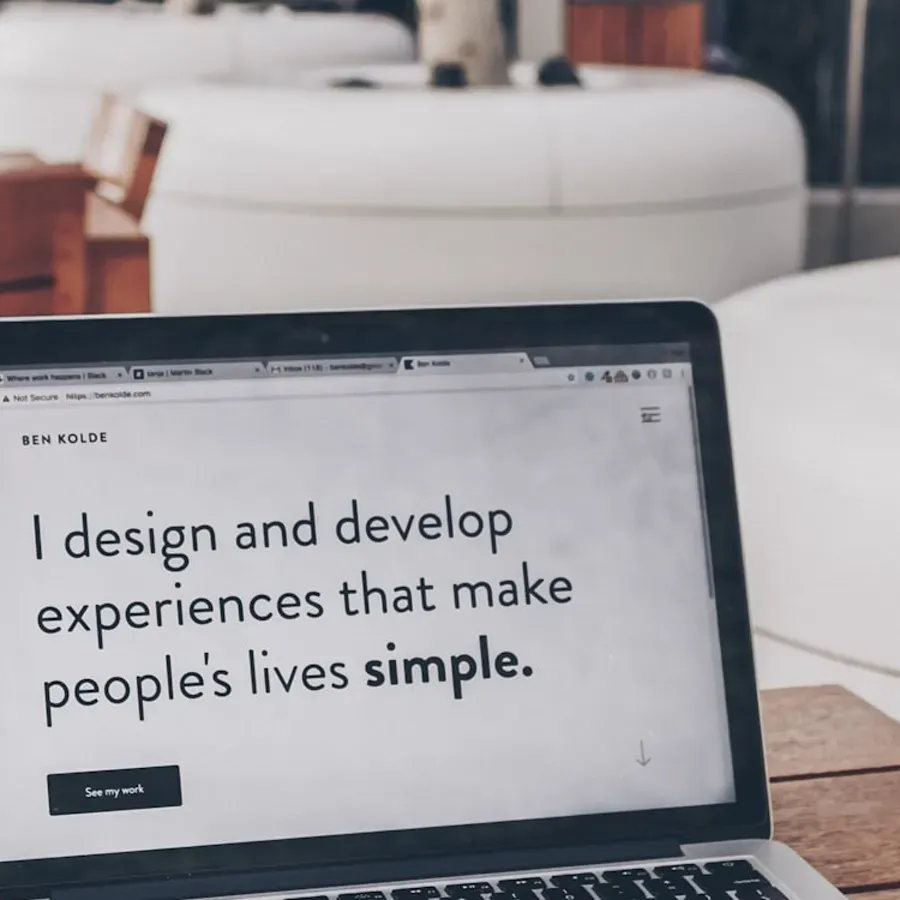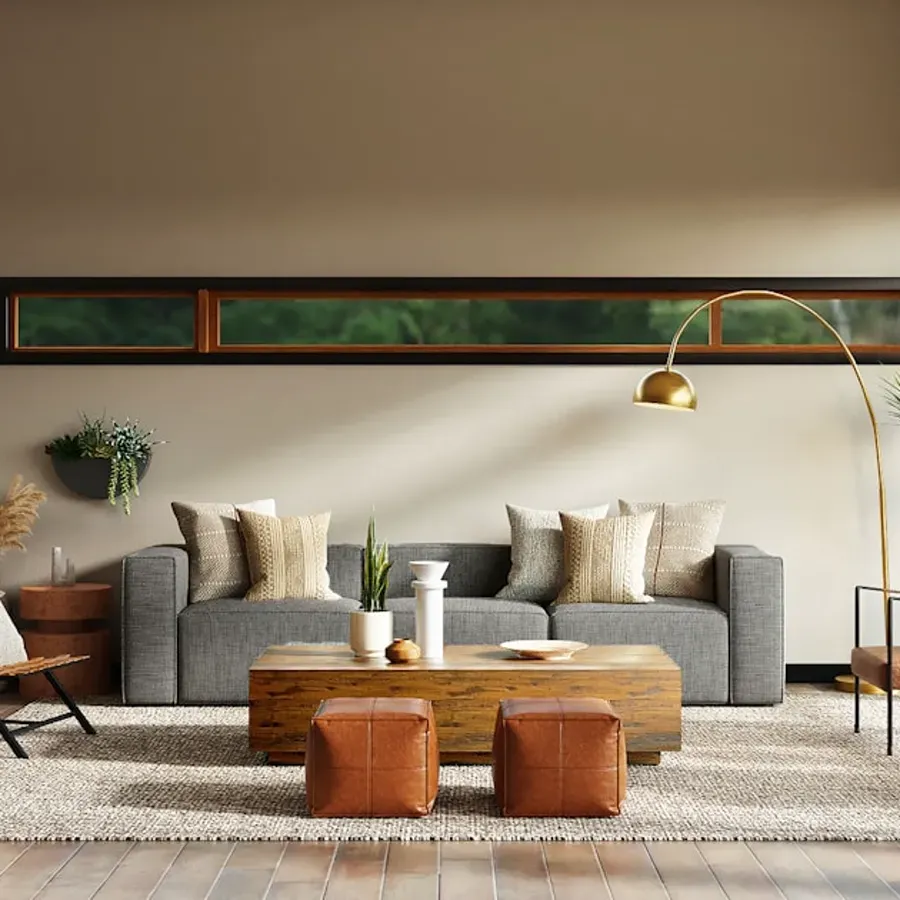
Website Design Trends 2026: Technology Breakthroughs and Experience
The digital landscape is evolving at breakneck speed, and as we approach 2026, website design is poised for transformative changes that will fundamentally alter how we interact with the web. The convergence of artificial intelligence, immersive technologies, and a growing emphasis on sustainability is creating a perfect storm of innovation. For businesses, designers, and developers, understanding these emerging website design trends 2026 isn't just about staying current—it's about future-proofing digital experiences and maintaining competitive relevance in an increasingly sophisticated online marketplace. This comprehensive exploration delves into the technological breakthroughs and user experience innovations that will define the next generation of web design, offering practical insights for implementation and strategic planning.
AI-Powered Design: The Intelligence Revolution
Artificial intelligence is no longer a futuristic concept—it's the driving force behind the most significant website design trends 2026. AI-powered design tools are democratising the creation process while simultaneously elevating the sophistication of user experiences.
Automated Design Systems
By 2026, AI-driven design platforms will generate entire website layouts based on brand guidelines, content type, and user behaviour data. These systems analyse millions of design patterns to create optimised interfaces that balance aesthetics with conversion goals. Tools like Figma's AI assistant and Adobe's Sensei are already paving the way, but the next generation will offer complete design-to-development workflows that reduce production time by up to 70%. This doesn't replace human designers—rather, it frees them to focus on strategic thinking and creative problem-solving.
Hyper-Personalisation at Scale
Machine learning algorithms will deliver individualised experiences for every visitor. Websites will dynamically adjust layouts, content hierarchy, colour schemes, and even typography based on user preferences, browsing history, device type, and contextual factors like time of day or location. This level of personalisation—once reserved for enterprise platforms—will become accessible to small businesses through affordable AI tools and plugins.
Conversational UI Evolution
Chatbot interfaces are evolving from simple query-response systems to sophisticated conversational experiences. By 2026, AI-powered chatbots will seamlessly integrate into website designs, offering contextual assistance that feels genuinely helpful rather than intrusive. These interfaces will handle complex customer service scenarios, guide purchasing decisions, and even anticipate user needs before questions are asked. The visual design of these chat interfaces will blend naturally with overall site aesthetics, moving away from the generic chat bubbles of today.
Immersive Experiences: Bridging Digital and Physical Worlds
The website design trends 2026 are characterised by increasingly immersive experiences that blur the boundaries between flat screens and three-dimensional reality. This shift represents a fundamental reimagining of web interaction.
3D Elements and Spatial Design
Three-dimensional graphics are transitioning from novelty to necessity. WebGL technology, combined with improved browser performance and faster internet speeds, enables rich 3D experiences without compromising load times. Product pages will feature fully rotatable, zoomable 3D models that users can customise in real-time. Architectural firms will offer virtual walkthroughs of properties, while e-commerce sites will let customers visualise furniture in their actual rooms through augmented reality web experiences. The key differentiator in 2026 will be performance optimisation—delivering these experiences smoothly across all devices.
Scroll-Triggered Animations and Parallax
Advanced scrolling effects will create narrative journeys through content. Unlike earlier parallax implementations that often felt gimmicky, 2026's scroll-triggered animations will serve purposeful storytelling functions. These animations will reveal content progressively, guide user attention, and create memorable brand experiences. Technologies like GSAP (GreenSock Animation Platform) and Framer Motion will enable designers to craft sophisticated, performance-optimised animations that enhance rather than hinder user experience.
Interactive Data Visualisation
Static charts and graphs are giving way to dynamic, interactive data presentations. Users will manipulate datasets in real-time, exploring information through touch, voice, or gesture inputs. This approach transforms complex information into engaging experiences, making data-driven storytelling accessible and compelling. Financial services, healthcare, and educational platforms will particularly benefit from these interactive visualisations.
The Evolution of Neomorphism and Glassmorphism
Design aesthetics in 2026 will see the maturation and refinement of recent visual trends, with neomorphism and glassmorphism evolving into more practical, accessible applications.
Refined Neomorphism
The soft, extruded surfaces of neomorphic design—popular in 2020-2023—will return in more refined forms. Designers have addressed earlier accessibility concerns, creating higher-contrast versions that maintain the aesthetic appeal while improving readability and usability. This evolution incorporates subtle shadows and highlights that create tactile, almost physical interfaces, particularly effective for dashboard designs and application interfaces.
Advanced Glassmorphism
Glassmorphic design elements—characterised by frosted-glass effects, transparency, and vibrant backgrounds—will become more sophisticated. The 2026 iteration focuses on performance optimisation, using CSS backdrop-filter properties more efficiently to reduce browser strain. This aesthetic works particularly well for overlay elements, navigation menus, and modal windows, creating depth and hierarchy without overwhelming users.
Hybrid Approaches
Rather than adhering strictly to one design philosophy, forward-thinking designers are blending elements of both approaches. This creates unique visual identities that leverage the strengths of each style—the tactile quality of neomorphism with the ethereal lightness of glassmorphism—resulting in distinctive, memorable interfaces that stand out in crowded digital markets.
Voice User Interface Integration
Voice interaction is becoming a standard expectation rather than a novel feature, fundamentally changing how websites are designed and navigated.
Voice-First Navigation
By 2026, websites will incorporate voice commands as a primary navigation method alongside traditional clicking and tapping. Users will speak queries to search site content, navigate between pages, or execute transactions. This requires designers to rethink information architecture, creating clear verbal pathways through content. Voice UI design considers natural language patterns, anticipating how users actually speak rather than how they type.
Visual Feedback for Voice Interactions
Effective voice interfaces require thoughtful visual design to confirm actions, display results, and guide users through voice-driven experiences. Designers are creating visual language systems—animated waveforms, pulsing indicators, and textual confirmations—that make voice interactions feel responsive and reliable. This multimodal approach combines auditory and visual feedback for optimal user confidence.
Accessibility Benefits
Voice UI dramatically improves web accessibility for users with visual impairments, motor disabilities, or reading difficulties. As voice technology matures, it's becoming a crucial component of inclusive design strategies, enabling broader audiences to access digital content effortlessly.
Sustainable Web Design: Designing for the Planet
Environmental consciousness is reshaping website design trends 2026, with sustainability moving from optional consideration to core design principle.
Carbon Footprint Optimisation
Every website generates carbon emissions through server energy consumption, data transfer, and device processing. Sustainable design minimises this impact through efficient coding practices, optimised images, reduced file sizes, and strategic use of caching. Tools like Website Carbon Calculator help designers measure and reduce their sites' environmental impact. By 2026, carbon-neutral websites will be a competitive differentiator and, in some regions, a regulatory requirement.
Eco-Friendly Design Practices
Sustainable design extends beyond technical optimisation. It includes choosing green hosting providers powered by renewable energy, implementing dark modes to reduce screen energy consumption, and designing for longevity rather than constant redesigns. Minimalist aesthetics—featuring clean layouts, limited colour palettes, and efficient typography—naturally align with sustainability goals while creating elegant user experiences.
Transparency and Communication
Progressive brands will communicate their sustainability efforts directly through their websites, displaying real-time carbon footprint data and explaining eco-friendly design choices. This transparency builds trust and appeals to environmentally conscious consumers who increasingly make purchasing decisions based on corporate environmental responsibility.
Accessibility-First Design Philosophy
Accessibility is transitioning from compliance checkbox to foundational design principle, driven by evolving standards and growing awareness of inclusive design benefits.
WCAG 3.0 Compliance
The Web Content Accessibility Guidelines 3.0, expected to be fully adopted by 2026, introduce more nuanced accessibility standards. These guidelines emphasise user outcomes over technical requirements, focusing on how disabled users actually experience websites. Designers will adopt methodologies like conformance testing with assistive technologies and inclusive user research involving people with diverse abilities.
Inclusive Design Patterns
Accessibility-first design creates better experiences for everyone, not just disabled users. High-contrast colour schemes improve readability in bright sunlight. Clear, simple language benefits non-native speakers and users with cognitive differences. Keyboard navigation alternatives help power users work more efficiently. By 2026, these inclusive patterns will be standard practice, embedded in design systems and component libraries from the outset.
Automated Accessibility Testing
AI-powered accessibility testing tools will identify potential issues during the design phase, providing real-time feedback on colour contrast, heading hierarchy, alt text quality, and navigation logic. This proactive approach prevents accessibility problems rather than retrofitting fixes after launch, reducing development costs while improving user experience quality.
Advanced Color Theming and Dark Mode Variations
Colour strategy in 2026 goes far beyond simple dark mode toggles, embracing sophisticated theming systems that adapt to user preferences, contexts, and even emotional states.
Dynamic Colour Systems
Advanced websites will implement contextual colour schemes that adjust based on time of day, user activity, or content type. Morning visits might feature energising, warm tones while evening sessions adopt calming, cooler palettes. These systems use CSS custom properties and JavaScript to create seamless transitions between colour schemes without page reloads.
Personalised Theme Preferences
Users will customise not just light versus dark modes but entire colour palettes to match their preferences or accessibility needs. This includes adjustable contrast levels, alternative colour combinations for colour-blind users, and saturation controls for users with light sensitivity. These preferences will sync across devices through user accounts, creating consistent experiences everywhere.
Emotional Design Through Colour
Sophisticated colour psychology applications will use hues strategically to influence user emotions and behaviours. E-commerce sites might employ slightly different colour temperatures for different product categories, while productivity apps use calming tones during focused work sessions and energising colours during breaks. This subtle manipulation—when used ethically—can significantly enhance user experience and engagement.
Micro-Interactions and Engagement Design
The devil is in the details, and micro-interactions represent the fine-grained design elements that transform good websites into exceptional ones.
Purposeful Animation
Every hover effect, button press, and page transition serves a communication purpose in well-designed 2026 websites. These micro-interactions provide feedback ('your action was registered'), guide attention ('look here next'), and create personality ('this is our brand character'). The key is restraint—animations should enhance usability without becoming distracting or slowing down task completion.
Haptic Feedback Integration
As mobile devices offer increasingly sophisticated haptic capabilities, websites will leverage these features through PWA (Progressive Web App) technologies. Subtle vibrations confirm button presses, different vibration patterns distinguish between action types, and haptic feedback makes digital interactions feel more tangible and satisfying. This creates a richer sensory experience that bridges digital and physical interactions.
Gamification Elements
Micro-interactions increasingly incorporate game-like elements—progress bars, achievement badges, completion animations—that make routine tasks more engaging. These elements tap into psychological principles of reward and accomplishment, encouraging users to complete desired actions while enjoying the process. Educational platforms, fitness apps, and productivity tools particularly benefit from thoughtful gamification.
From Mobile-First to Mobile-Only Strategies
Mobile devices dominate web traffic in 2026, leading some organisations to adopt mobile-only design approaches that reimagine what websites can be.
Progressive Web Apps Maturity
PWAs have evolved from experimental technology to mainstream standard. These web applications offer app-like experiences—including offline functionality, push notifications, and home screen installation—without requiring app store downloads. By 2026, PWAs will be the default approach for many businesses, particularly in emerging markets where mobile data costs and storage limitations make native apps less practical.
Thumb-Zone Optimisation
Mobile-only design prioritises one-handed use, placing primary actions within easy thumb reach. Navigation moves to bottom bars, important content clusters in the centre-lower screen area, and gestural controls replace button clicks. This ergonomic approach acknowledges how people actually use their phones—often on the go, with one hand occupied.
Simplified Feature Sets
Mobile-only strategies embrace constraints as creative opportunities. Rather than cramming desktop functionality into smaller screens, these sites focus on core use cases and essential features. This creates faster, more focused experiences that excel at specific tasks. Additional functionality lives in companion apps or is accessible through progressive enhancement for users who explicitly need it.
Vietnamese Market Trends and Local Adaptations
Understanding website design trends 2026 requires recognising regional variations, particularly in rapidly growing markets like Vietnam where unique technological and cultural factors shape web design.
Mobile-Centric Infrastructure
Vietnam's internet users are overwhelmingly mobile-first, with many accessing the web exclusively through smartphones. This reality demands ruthlessly optimised mobile experiences with minimal data consumption, fast load times on 3G/4G networks, and intuitive interfaces for users who may have limited technological literacy. Progressive enhancement strategies ensure basic functionality works even with slow connections or older devices.
Super App Integration
Vietnamese users rely heavily on super apps like Zalo, Grab, and Momo for communication, transportation, and payments. Forward-thinking websites integrate with these platforms, enabling social login through Zalo, payment via Momo, or content sharing within these ecosystems. This localisation strategy recognises users' existing habits and preferences rather than forcing adoption of global platforms.
Cultural Design Considerations
Vietnamese web design often embraces denser information layouts, vibrant colour schemes, and detailed product descriptions compared to Western minimalism. Successful sites balance international best practices with local aesthetic preferences, creating hybrid approaches that feel familiar to Vietnamese users while incorporating modern UX principles. E-commerce sites, in particular, must display comprehensive product information, multiple images, and detailed specifications to meet local shopping expectations.
Localised Payment and Logistics
Website functionality must accommodate Vietnam's unique infrastructure—COD (cash on delivery) remains popular, local payment gateways like VNPay and ZaloPay are essential, and integration with domestic logistics providers is crucial. Design interfaces that clearly communicate payment options, delivery timeframes, and return policies build trust in markets where online shopping is still maturing.
Conclusion: Embracing the Future of Web Design
The website design trends 2026 paint a picture of increasingly intelligent, immersive, and inclusive digital experiences. From AI-powered personalisation to sustainable design practices, from voice interfaces to mobile-only strategies, these trends reflect broader technological shifts and evolving user expectations. Success in this landscape requires balancing innovation with accessibility, aesthetics with performance, and global best practices with local adaptation.
For businesses and designers, the imperative is clear: begin implementing these trends now. Experiment with AI design tools, audit your sites for accessibility compliance, optimise for sustainability, and test mobile-only approaches. The websites that will thrive in 2026 are being built today by forward-thinking teams who recognise that great web design is no longer just about looking good—it's about creating experiences that are intelligent, responsible, inclusive, and genuinely valuable to users.
Ready to future-proof your website? Start by assessing your current design against these emerging trends. Identify quick wins—perhaps implementing dark mode or improving mobile responsiveness—while planning larger strategic initiatives like AI integration or comprehensive accessibility overhauls. The journey to 2026-ready web design begins with a single step, and the competitive advantages gained by early adopters will be substantial and lasting.






